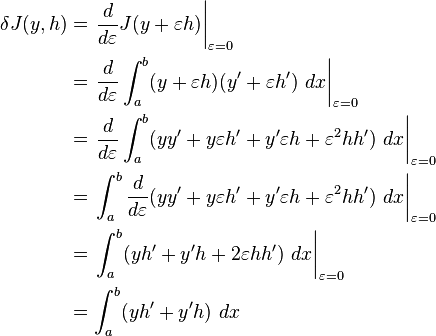First variation
In applied mathematics and the calculus of variations, the first variation of a functional J(y) is defined as the linear functional  mapping the function h to
mapping the function h to
where y and h are functions, and ε is a scalar. This is recognizable as the Gâteaux derivative of the functional.
Example
Compute the first variation of
From the definition above,
See also
External links
- Exampleproblems.com has more examples of computing the first variation of functionals.
This article is issued from Wikipedia - version of the 9/3/2015. The text is available under the Creative Commons Attribution/Share Alike but additional terms may apply for the media files.


